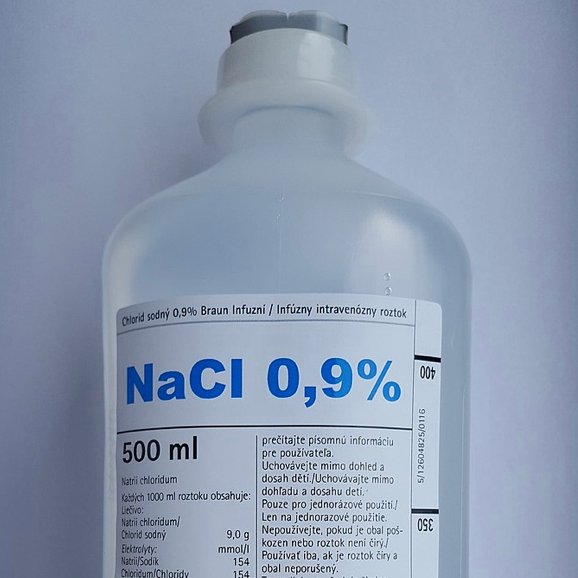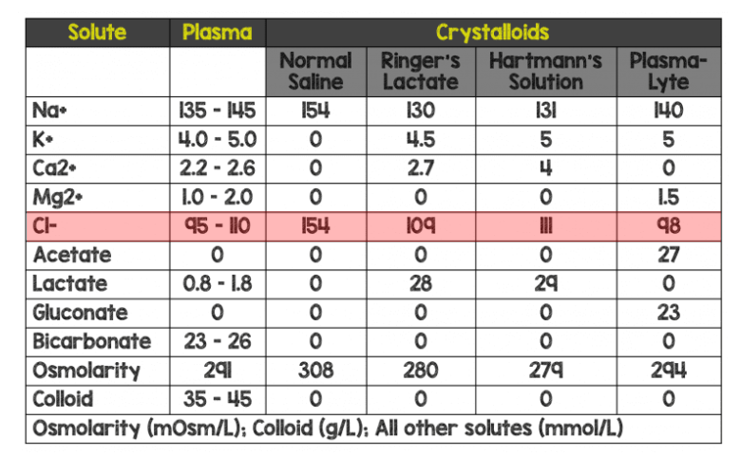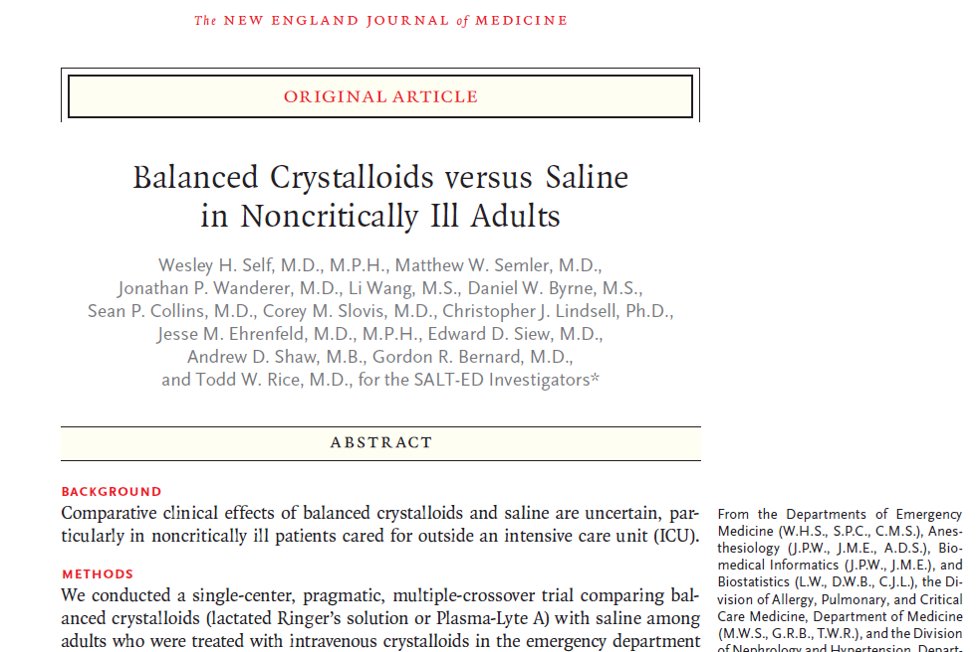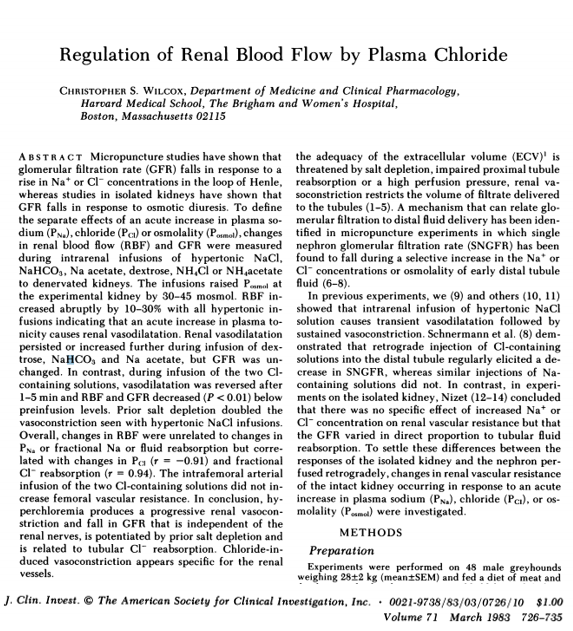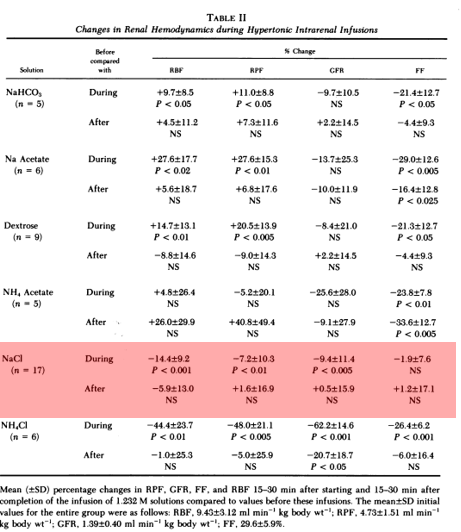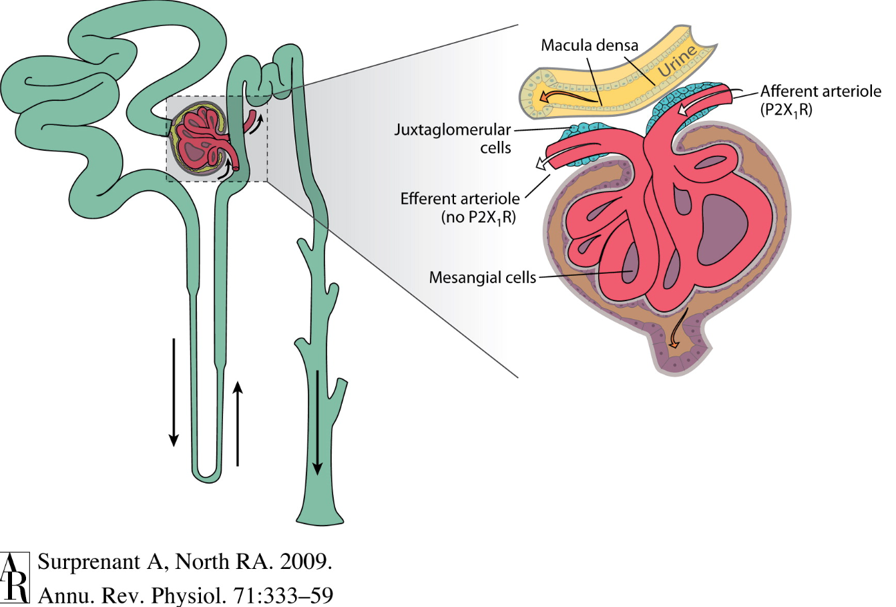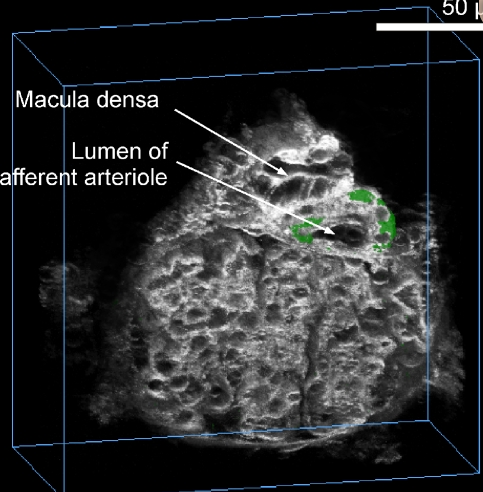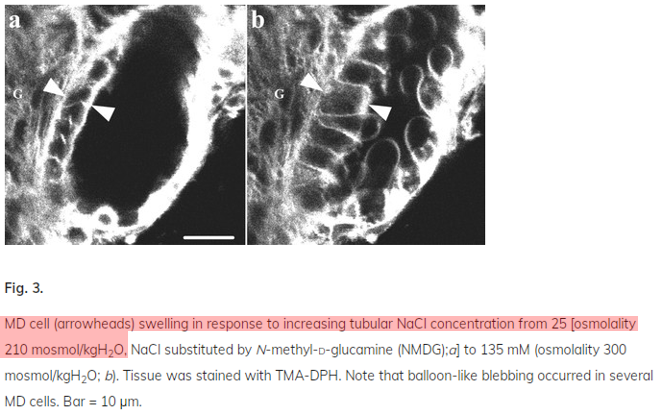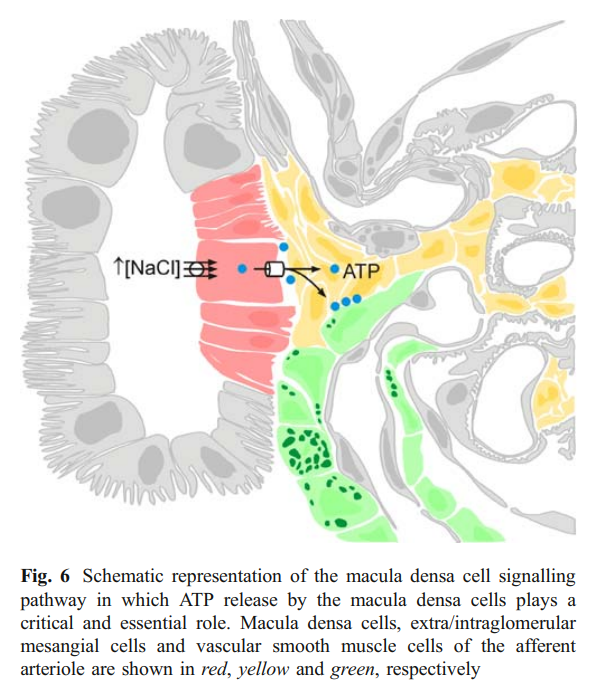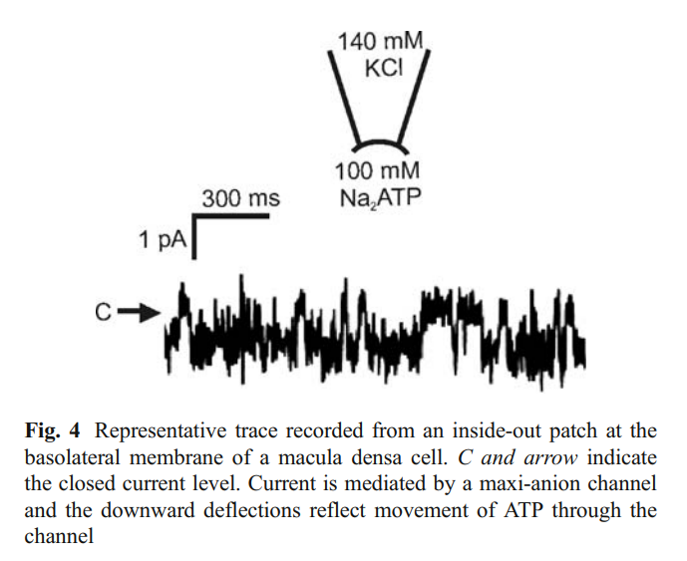1/
There seems to be an association between the use of "normal" saline and acute kidney injury (when compared with other IV fluids).
Why would that be?
#medthread #medtwitter #tweetorial
There seems to be an association between the use of "normal" saline and acute kidney injury (when compared with other IV fluids).
Why would that be?
#medthread #medtwitter #tweetorial
2/
We need to first understand 2 things:
 What is the difference between saline and other "balanced" crystalloid IV fluids?
What is the difference between saline and other "balanced" crystalloid IV fluids?
 What is the evidence that saline is associated with kidney injury?
What is the evidence that saline is associated with kidney injury?
We need to first understand 2 things:
 What is the difference between saline and other "balanced" crystalloid IV fluids?
What is the difference between saline and other "balanced" crystalloid IV fluids? What is the evidence that saline is associated with kidney injury?
What is the evidence that saline is associated with kidney injury?
3/
 How is saline different from other "balanced" crystalloid IV fluids?
How is saline different from other "balanced" crystalloid IV fluids?
 Saline has
Saline has levels of Na/Cl
levels of Na/Cl
 Bc of this difference in composition, when used in large volumes saline
Bc of this difference in composition, when used in large volumes saline serum Cl levels and causes a hyperchloremic metabolic acidosis
serum Cl levels and causes a hyperchloremic metabolic acidosis
https://bit.ly/358PJah
 How is saline different from other "balanced" crystalloid IV fluids?
How is saline different from other "balanced" crystalloid IV fluids? Saline has
Saline has levels of Na/Cl
levels of Na/Cl Bc of this difference in composition, when used in large volumes saline
Bc of this difference in composition, when used in large volumes saline serum Cl levels and causes a hyperchloremic metabolic acidosis
serum Cl levels and causes a hyperchloremic metabolic acidosis https://bit.ly/358PJah
4/
 What is the evidence that saline is associated with renal injury?
What is the evidence that saline is associated with renal injury?
There are several studies suggesting this association. Here's one
https://bit.ly/2ZG8wbZ
 What is the evidence that saline is associated with renal injury?
What is the evidence that saline is associated with renal injury?There are several studies suggesting this association. Here's one

https://bit.ly/2ZG8wbZ
5/
Because there is significantly more chloride in saline than other IV fluids, let's zoom in and see how that might affect the kidney
Infusing high chloride-containing fluids into dogs decreased renal perfusion and glomerular filtration rate (GFR).
https://bit.ly/36ei7cy
Because there is significantly more chloride in saline than other IV fluids, let's zoom in and see how that might affect the kidney

Infusing high chloride-containing fluids into dogs decreased renal perfusion and glomerular filtration rate (GFR).
https://bit.ly/36ei7cy
6/
 Why would high serum chloride levels decrease renal blood flow and GFR?
Why would high serum chloride levels decrease renal blood flow and GFR?
The answer involves the macula densa.
 Why would high serum chloride levels decrease renal blood flow and GFR?
Why would high serum chloride levels decrease renal blood flow and GFR? The answer involves the macula densa.
7/
To review:
 Macula densa cells sense Na/Cl levels in the distal convoluted tubule (DCT)
Macula densa cells sense Na/Cl levels in the distal convoluted tubule (DCT)
 In response to increased Na/Cl levels in the DCT the macula densa decreases renal blood flow and GFR by inducing renal afferent arteriole vasoconstriction
In response to increased Na/Cl levels in the DCT the macula densa decreases renal blood flow and GFR by inducing renal afferent arteriole vasoconstriction
https://bit.ly/2Qdwzf7
To review:
 Macula densa cells sense Na/Cl levels in the distal convoluted tubule (DCT)
Macula densa cells sense Na/Cl levels in the distal convoluted tubule (DCT)  In response to increased Na/Cl levels in the DCT the macula densa decreases renal blood flow and GFR by inducing renal afferent arteriole vasoconstriction
In response to increased Na/Cl levels in the DCT the macula densa decreases renal blood flow and GFR by inducing renal afferent arteriole vasoconstrictionhttps://bit.ly/2Qdwzf7
8/
Look how close the macula densa and renal afferent arteriole are to each other
https://www.ncbi.nlm.nih.gov/pmc/articles/PMC2776136/
Look how close the macula densa and renal afferent arteriole are to each other

https://www.ncbi.nlm.nih.gov/pmc/articles/PMC2776136/
9/
When exposed to high levels of Cl (and Na) the macula densa cells literally swell.
https://www.ncbi.nlm.nih.gov/pubmed/12060602
When exposed to high levels of Cl (and Na) the macula densa cells literally swell.
https://www.ncbi.nlm.nih.gov/pubmed/12060602
10/
Along with swelling the macula densa cells release ATP, signalling nearby afferent arterioles to constrict, renal blood flow and GFR.
renal blood flow and GFR.
This process is called tubuloglomerular feedback, allowing the kidney to regulate its own perfusion
https://bit.ly/2ZGbzRs
Along with swelling the macula densa cells release ATP, signalling nearby afferent arterioles to constrict,
 renal blood flow and GFR.
renal blood flow and GFR.This process is called tubuloglomerular feedback, allowing the kidney to regulate its own perfusion
https://bit.ly/2ZGbzRs
11/
ATP release from the macula densa cells is actually stimulated directly by Cl
https://www.ncbi.nlm.nih.gov/pmc/articles/PMC2776136/
ATP release from the macula densa cells is actually stimulated directly by Cl

https://www.ncbi.nlm.nih.gov/pmc/articles/PMC2776136/
So, Cl sensed by the macula dense leads to
Cl sensed by the macula dense leads to ATP release, which signals afferent renal arterioles to constrict, which
ATP release, which signals afferent renal arterioles to constrict, which GFR
GFR
 Cl sensed by the macula dense leads to
Cl sensed by the macula dense leads to ATP release, which signals afferent renal arterioles to constrict, which
ATP release, which signals afferent renal arterioles to constrict, which GFR
GFR
12/
Let's summarize:
 "Normal" saline has
"Normal" saline has levels of Cl compared w/ other IV crystalloid fluids
levels of Cl compared w/ other IV crystalloid fluids
 Increased serum Cl levels
Increased serum Cl levels renal blood flow and GFR
renal blood flow and GFR
 This occurs because of ATP release from macula densa cells, which causes renal afferent arteriolar vasoconstriction
This occurs because of ATP release from macula densa cells, which causes renal afferent arteriolar vasoconstriction
Let's summarize:
 "Normal" saline has
"Normal" saline has levels of Cl compared w/ other IV crystalloid fluids
levels of Cl compared w/ other IV crystalloid fluids Increased serum Cl levels
Increased serum Cl levels renal blood flow and GFR
renal blood flow and GFR This occurs because of ATP release from macula densa cells, which causes renal afferent arteriolar vasoconstriction
This occurs because of ATP release from macula densa cells, which causes renal afferent arteriolar vasoconstriction

 Read on Twitter
Read on Twitter